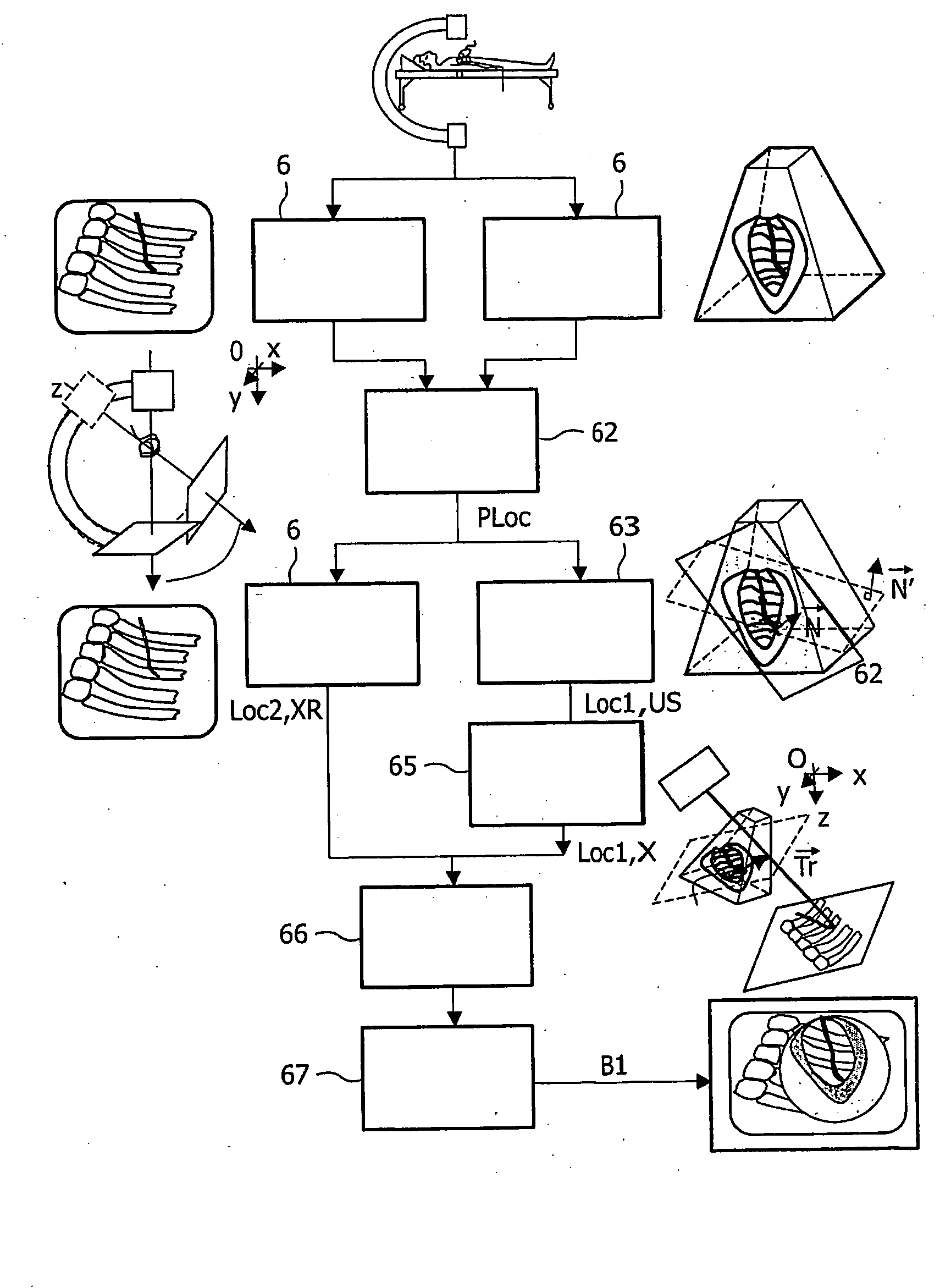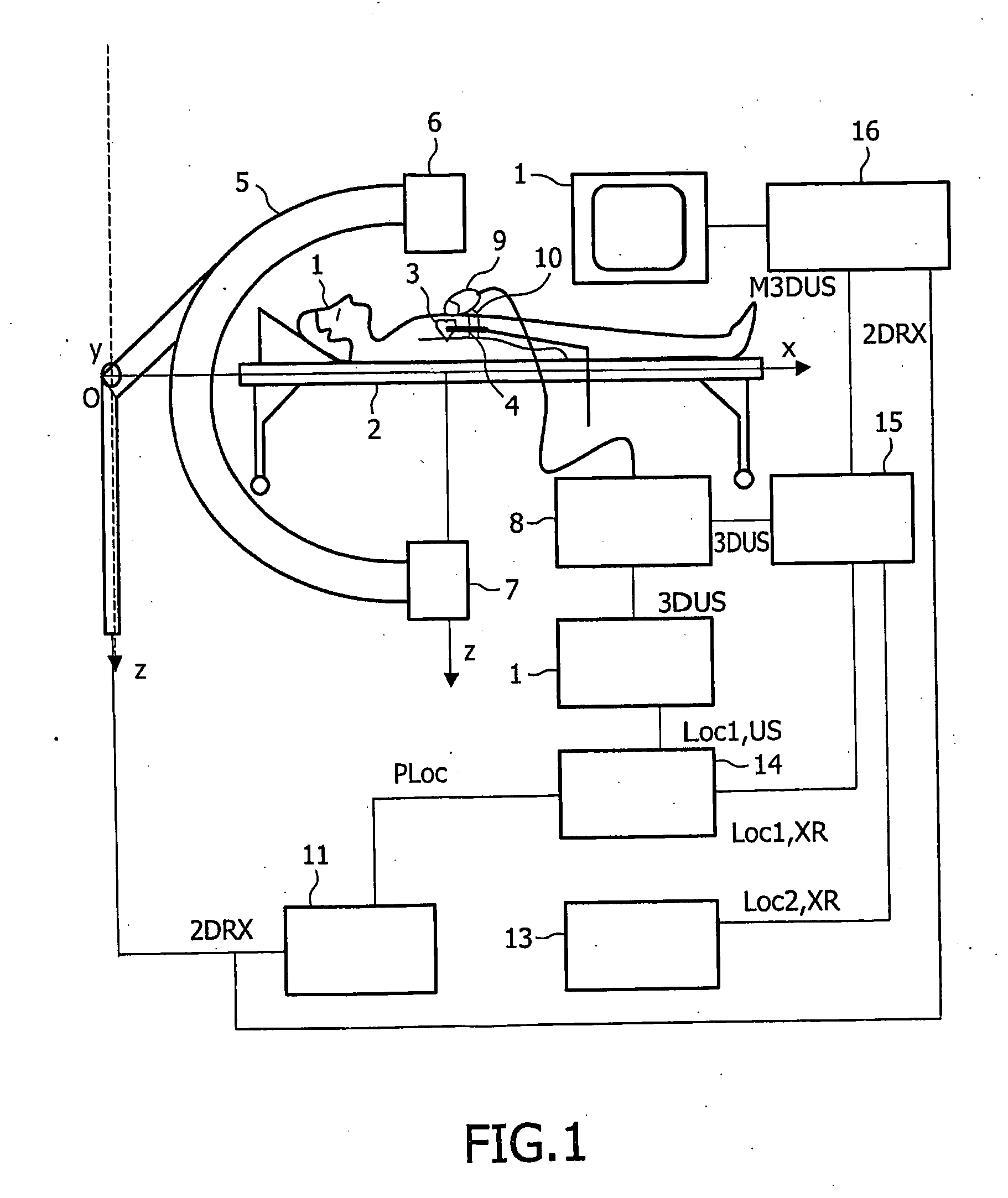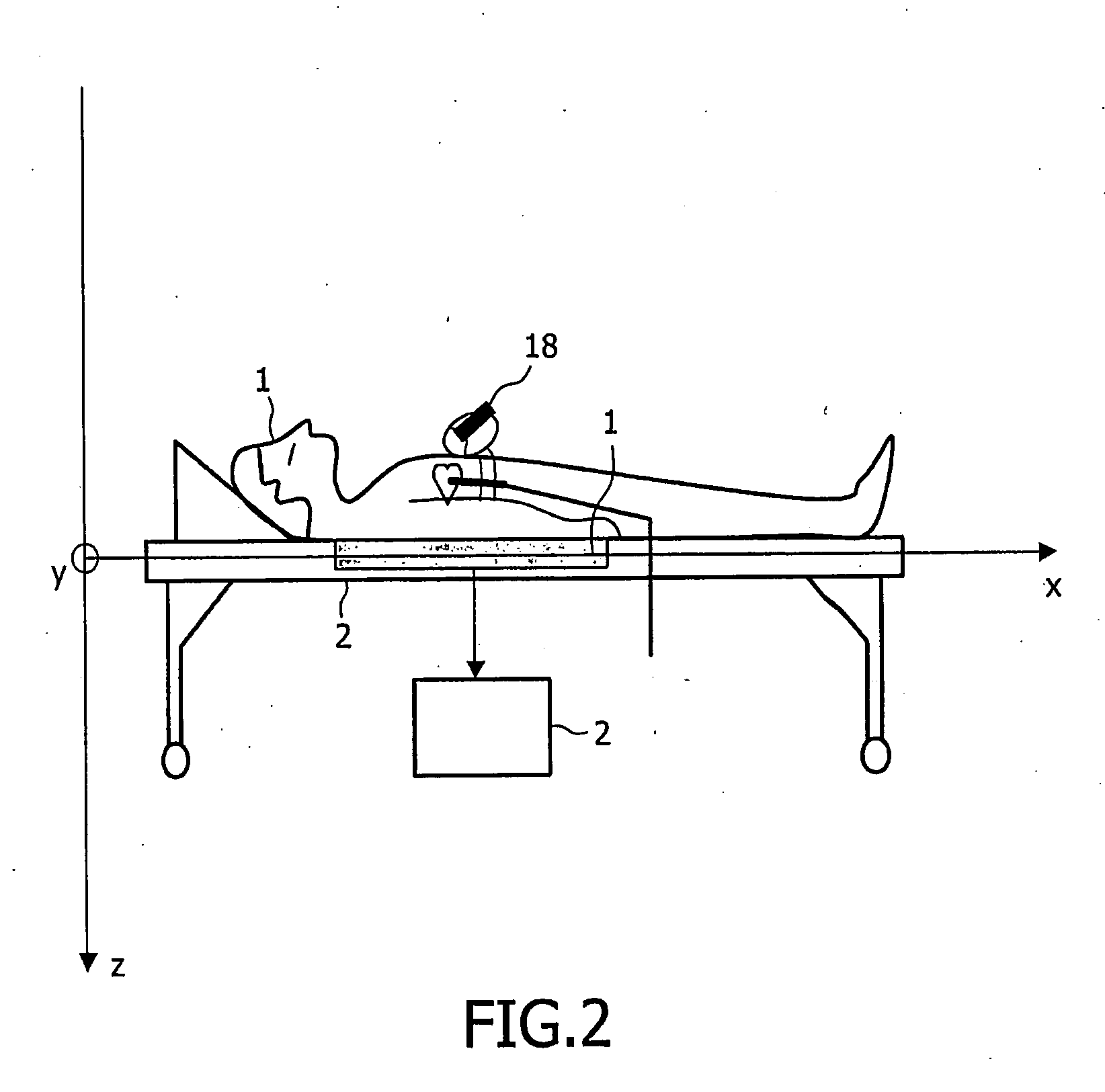System For Guiding a Medical Instrument in a Patient Body
a technology for guiding a medical instrument and a patient body, applied in the field of medical systems, can solve the problems of low resolution, complicating the interventional procedure, narrow viewing field, etc., and achieve the effect of improving the visibility of the medical instrument and its surrounding anatomy
- Summary
- Abstract
- Description
- Claims
- Application Information
AI Technical Summary
Benefits of technology
Problems solved by technology
Method used
Image
Examples
first embodiment
[0066]In an alternative of the invention, the whole tip is detected, which allows to determine a location of a landmark, for instance the tip end T and an orientation of the tip, specified by two Euler angles. Advantageously, a transformation comprising a translation and two rotations can be derived and the mapping of the 3D ultrasound data set with the 2D X-Ray image is improved.
[0067]In a second embodiment of the invention also illustrated by FIG. 5, the first and second localizations of the medical instrument 4 are based on the detection of a plurality, i.e. at least three non aligned landmarks T, Lk2, Lk3, which are arranged on the medical instrument 4. Such a plurality of landmarks allow to define a second crop plane 33 and a second normal {right arrow over (N)}′ within the 3D ultrasound data set, which can advantageously serve for reorienting the X-ray source 6 in order to optimize the X-ray acquisition with respect to the detected position of the medical instrument 4. An adva...
third embodiment
[0068]In the invention illustrated by FIG. 8, the plurality of landmarks are distributed over the medical instrument 4 and at least two reference medical instruments 40, 41. Said reference medical instruments 40, 41 are both fixed in the patient body during the whole clinical procedure and comprise each an echogen and radioopaque tip T2, T3. They may also comprise other landmarks than the tips T, T2, T3, which may allow for instance the determination of tip orientations {right arrow over (O)}1, {right arrow over (O)}2, {right arrow over (O)}3.
[0069]A first advantage of the third embodiment of the invention is that the landmarks used for localizing the medical instrument are more distant from each other. Therefore, the definition of the transformation is more robust to local errors of localization. As a matter of fact an error of one or two pixels has no consequences at a vicinity of the medical instrument, but can have dramatical effects in more distant areas of the 3D ultrasound da...
second embodiment
[0080]Another possibility is to use an active contour technique (also called “snake”). This technique, well known to those skilled in the art, firstly consists in defining an initial contour and secondly in making said initial contour evolve under the influence of internal and external forces. A final contour 46 is obtained. It is then possible to differentiate points located inside from points located outside the contour 46 and to replace only the outside points of the 2D X-ray projection 40 by the corresponding points of the 2D ultrasound view 41. An advantage of this second embodiment is to benefit from X-ray information in a larger neighbourhood of the medical instrument 4.
[0081]In another alternative of the invention, an alpha blending technique, well-known to those skilled in the art, is used for combining the X-ray intensity values of the points of the X-ray projection with the ultrasound intensity values of the corresponding points of the 3D ultrasound data set. An advantage...
PUM
 Login to View More
Login to View More Abstract
Description
Claims
Application Information
 Login to View More
Login to View More - R&D
- Intellectual Property
- Life Sciences
- Materials
- Tech Scout
- Unparalleled Data Quality
- Higher Quality Content
- 60% Fewer Hallucinations
Browse by: Latest US Patents, China's latest patents, Technical Efficacy Thesaurus, Application Domain, Technology Topic, Popular Technical Reports.
© 2025 PatSnap. All rights reserved.Legal|Privacy policy|Modern Slavery Act Transparency Statement|Sitemap|About US| Contact US: help@patsnap.com



